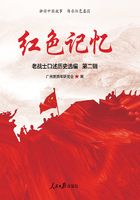First, by direct experiment, as it is called. In plain English-- go home and make a little Hartford Bridge Flat in the stable-yard; and then ask Mrs. How if she will not make a glen in it like this glen here. We will go home and try that. We will make a great flat cake of clay, and put upon it a cap of sand; and then we will rain upon it out of a watering-pot; and see if Mrs. How does not begin soon to make a glen in the side of the heap, just like those on Hartford Bridge Flat. I believe she will; and certainly, if she does, it will be a fresh proof that my guess is right. And then we will see whether water will not make glens of a different shape than these, if it run over soils of a different kind. We will make a Hartford Bridge Flat turned upside down--a cake of sand with a cap of clay on the top; and we will rain on that out of our watering-pot, and see what sort of glens we make then. I can guess what they will be like, because I have seen them--steep overhanging cliffs, with very narrow gullies down them: but you shall try for yourself, and make up your mind whether you think me right or wrong. Meanwhile, remember that those gullies too will have been made by water.
And there is another way of "verifying my theory," as it is called; in plain English, seeing if my guess holds good; that is, to look at other valleys--not merely the valleys round here, but valleys in clay, in chalk, in limestone, in the hard slate rock such as you saw in Devonshire--and see whether my guess does not hold good about them too; whether all of them, deep or shallow, broad or narrow, rock or earth, may not have been all hollowed out by running water. I am sure if you would do this you would find something to amuse you, and something to instruct you, whenever you wish. I know that I do. To me the longest railroad journey, instead of being stupid, is like continually turning over the leaves of a wonderful book, or looking at wonderful pictures of old worlds which were made and unmade thousands of years ago. For I keep looking, not only at the railway cuttings, where the bones of the old worlds are laid bare, but at the surface of the ground; at the plains and downs, banks and knolls, hills and mountains; and continually asking Mrs. How what gave them each its shape: and I will soon teach you to do the same. When you do, I tell you fairly her answer will be in almost every case, "Running water."
Either water running when soft, as it usually is; or water running when it is hard--in plain words, moving ice.
About that moving ice, which is Mrs. How's stronger spade, I will tell you some other time; and show you, too, the marks of it in every gravel pit about here. But now, I see, you want to ask a question; and what is it?
Do I mean to say that water has made great valleys, such as you have seen paintings and photographs of,--valleys thousands of feet deep, among mountains thousands of feet high?
Yes, I do. But, as I said before, I do not like you to take my word upon trust. When you are older you shall go to the mountains, and you shall judge for yourself. Still, I must say that I never saw a valley, however deep, or a cliff, however high, which had not been scooped out by water; and that even the mountain-tops which stand up miles aloft in jagged peaks and pinnacles against the sky were cut out at first, and are being cut and sharpened still, by little else save water, soft and hard; that is, by rain, frost, and ice.
Water, and nothing else, has sawn out such a chasm as that through which the ships run up to Bristol, between Leigh Wood and St.
Vincent's Rocks. Water, and nothing else, has shaped those peaks of the Matterhorn, or the Weisshorn, or the Pic du Midi of the Pyrenees, of which you have seen sketches and photographs. Just so water might saw out Hartford Bridge Flat, if it had time enough, into a labyrinth of valleys, and hills, and peaks standing alone; as it has done already by Ambarrow, and Edgbarrow, and the Folly Hill on the other side of the vale.
I see you are astonished at the notion that water can make Alps.
But it was just because I knew you would be astonished at Madam How's doing so great a thing with so ****** a tool, that I began by showing you how she was doing the same thing in a small way here upon these flats. For the safest way to learn Madam How's methods is to watch her at work in little corners at commonplace business, which will not astonish or frighten us, nor put huge hasty guesses and dreams into our heads. Sir Isaac Newton, some will tell you, found out the great law of gravitation, which holds true of all the suns and stars in heaven, by watching an apple fall: and even if he did not find it out so, he found it out, we know, by careful thinking over the plain and commonplace fact, that things have weight. So do you be humble and patient, and watch Madam How at work on little things. For that is the way to see her at work upon all space and time.















